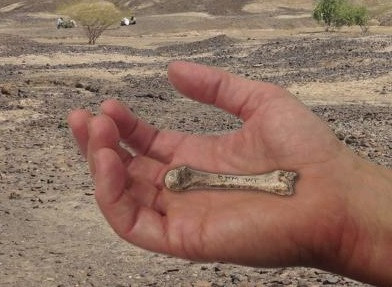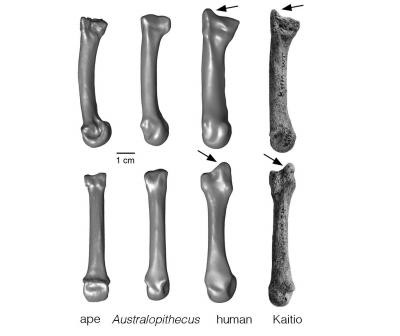1.4 Million-Year-Old Human Hand Bone Closes Evolutionary Gap

A human hand bone discovered in Kenya has shown modern anatomy developed around half-a-million years earlier than was previously thought.
Humans have a very distinctive hand anatomy that lets them use tools. Apes and other primates do not have these features but it has never been clear when this anatomical feature appeared on modern man.
However, researchers now believe they have found the early evidence of a modern human-like hand in a Homo erectus bone dating to 1.42 million years.
The bone was found near sites where the earliest Acheulian tools appeared around 1.6 million years ago.
Researchers from the West Turkana Paleo Project team, led by Fredrick Manthi of the National Museums of Kenya, discovered the bone and passed it onto Carol Ward from the University of Missouri for examination.
"This bone is the third metacarpal in the hand, which connects to the middle finger," Ward said.
"What makes this bone so distinct is that the presence of a styloid process, or projection of bone, at the end that connects to the wrist. Until now, this styloid process has been found only in us, Neanderthals and other archaic humans."

The styloid process helps the hand bone lock into the wrist, allowing for more pressure to be applied to the wrist and hand from grasping thumbs and fingers. The lack of this process caused problems for early humans when they attempted to make tools, Ward noted.
"The styloid process reflects an increased dexterity that allowed early human species to use powerful yet precise grips when manipulating objects. This was something that their predecessors couldn't do as well due to the lack of this styloid process and its associated anatomy.
"With this discovery, we are closing the gap on the evolutionary history of the human hand. This may not be the first appearance of the modern human hand, but we believe that it is close to the origin, given that we do not see this anatomy in any human fossils older than 1.8 million years.
"Our specialised, dexterous hands have been with us for most of the evolutionary history of our genus, Homo. They are – and have been for almost 1.5 million years – fundamental to our survival," she said.
© Copyright IBTimes 2025. All rights reserved.






















